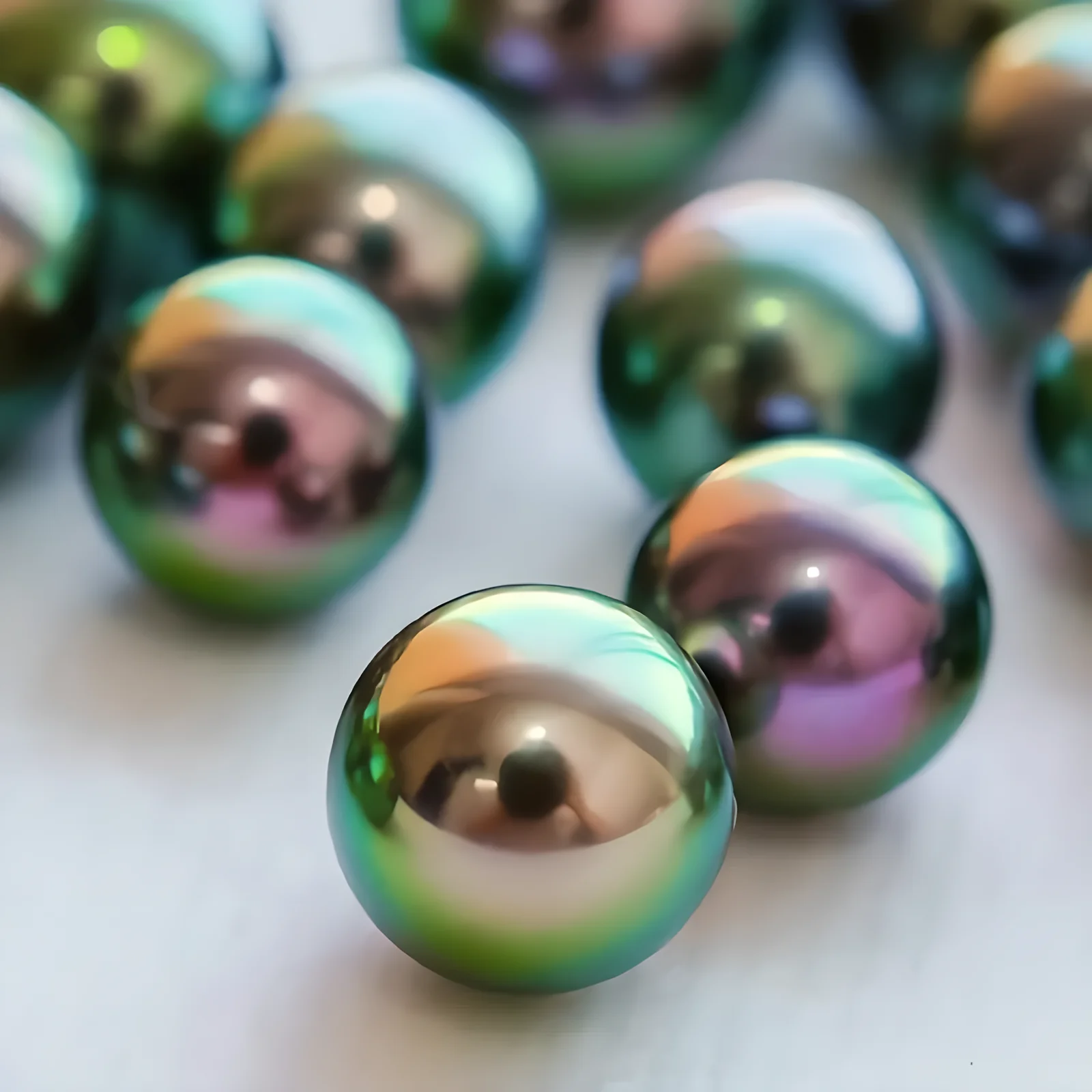Are Freshwater Colored Pearls the New Black Pearl Competitors?

Introduction: Are Freshwater Colored Pearls the New Tahitian Rivals?
The world of pearl jewelry is as mesmerizing as the ocean itself, filled with hues and lusters that can enchant anyone. Recently, a question has bubbled to the surface of the pearl industry: Are freshwater colored pearls destined to compete with the renowned Tahitian black pearls? As the popularity of colored freshwater pearls rises, curiosity grows about whether these iridescent gems will clash in the marketplace. This article seeks to unravel the beauty and complexities of freshwater colored pearls, exploring their distinct qualities and future potential.

Section 1: The Enchanting World of Pearl Colors
Understanding the Spectrum of Freshwater Pearls
Freshwater pearls, known for their stunning array of colors, primarily emerge from the beloved Hyriopsis cumingii, or the triangle mussel. These gems boast an impressive palette, including hues of purple, pink, yellow, and white. Unlike their saltwater counterparts, freshwater pearls are celebrated for their diversity and playfulness in color source.
The Science Behind the Pearl’s Coloration
Delving into the color variations of pearls, one must consider the genetic makeup of the mussels. Much like a painter with a canvas, these mussels orchestrate a symphony of colors through genetic combinations. While theoretically limitless in variations, in reality, freshwater pearls tend to orbit around these four primary hues. As these mussels continue to evolve through careful breeding, we might anticipate even more harmonious colors breathing life into the jewelry industry.
Section 2: The Quest for Perfection
Research and Development in Pearl Cultivation
Scientific advancements aren’t merely for space exploration; they extend into the depths of our waters, contributing to the cultivation of these gems source. Current research focuses on achieving purer, more vibrant colorations in freshwater pearls. It’s an ambitious endeavor, as cultivators aim to create pearls with distinct, robust colors within the traditional spectrum, steering away from the unpredictability of mixed hues.
The Pursuit of the Ideal Pearl
Despite the vast possibilities in genetic combinations, not all hues have reached the markets in equal abundance. White pearls tend to dominate due to specific genetic traits that make their production more straightforward, a phenomenon known as “recessive homogeneity.” Unlike other colors, white pearls can reliably reproduce their hues, creating a consistent supply.
Section 3: Can Freshwater Pearls Rival Tahitian Pearls?
Comparing Unique Characteristics
Tahitian pearls, often termed the “Queen of Pearls,” are famed for their dark, exotic allure, ranging from black to overtones of green and blue source. Freshwater pearls, on the other hand, with their softer, more varied palette, offer a distinct option for pearl enthusiasts. While Tahitian pearls emerge from the mysterious depths of Polynesia, freshwater pearls hail from the tranquil lakes and rivers of China, each offering its unique aesthetic appeal.
Debunking the Myth of Market Competition
Though visually different, some might wonder if these pearls will eventually compete head-to-head. But when examined closely, the question of “homogenized competition” seems less plausible. Freshwater pearls have not yet shown a tilt towards the color profiles of Tahitian gems, indicating an unlikely overlap in market competition.
Conclusion: A Bright and Colorful Future Awaits
Freshwater colored pearls represent a flourishing segment of the jewelry industry, dazzling connoisseurs with their unique charm. As research advances, we anticipate these gems continuing down the path of more refined, pure hues—echoing four main color pathways. While they may not compete directly with Tahitian pearls in terms of hue, they enrich the market by offering a delightful spectrum of choices to meet diverse tastes.
In conclusion, for pearl lovers and investors alike, the future is gleaming and promising. These pearls are more than mere adornments; they encapsulate the wonders of nature, the finesse of science, and the ever-expanding creativity of human endeavor. Whether captivated by the deep mystique of Tahitian pearls or the playful vibrancy of freshwater gems, there’s no arguing that pearls remain timeless treasures, dancing elegantly between nature and art.
